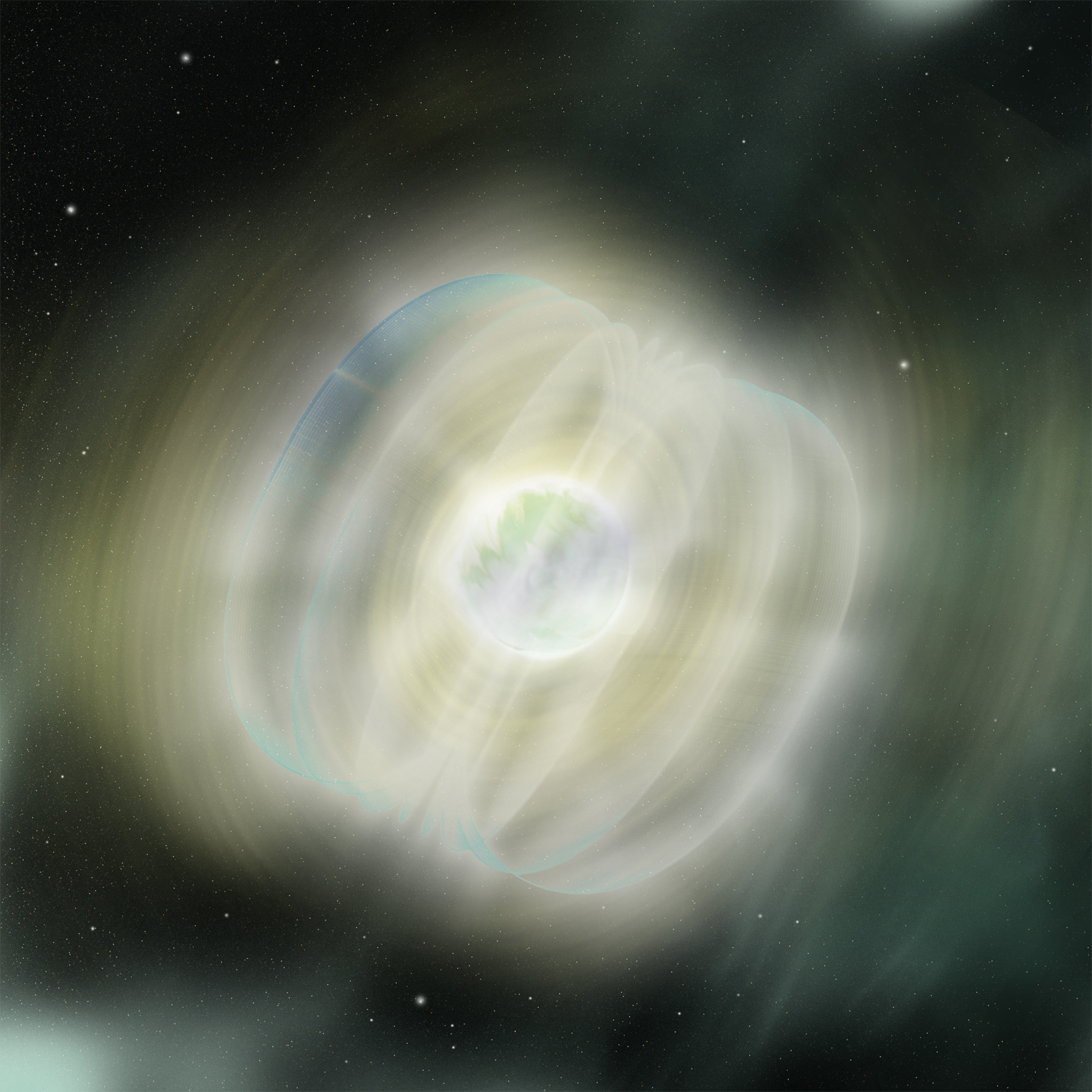[/caption]
Swift has made another unusual discovery. The orbiting satellite detected a very strange star that “twinkled” with gamma rays, X-rays, and light — and then vanished. Back in June the satellite detected a spike of gamma-rays that lasted less than five seconds. But this high-energy flash wasn’t a gamma-ray burst — the birth cry of a black hole far across the universe. It was something much closer to home. During the next three days, the object brightened and faded in visible light. It flashed over 40 times! Eleven days later, it flashed again, this time at infrared wavelengths. Then, it disappeared from view!
Swift had reported the event’s position to astronomers all over the world, so within minutes, robotic telescopes turned to a spot in the constellation Vulpecula. It was cataloged as “Swift J195509+261406.” So, several astronomers had a look at this unusual object before it disappeared.
Astronomers think the object was a special kind of neutron star called a magnetar. “We are dealing with an object that was hibernating for decades before entering a brief activity period,” explains Alberto J. Castro-Tirado, lead author of the paper that was published in the Sept. 25 edition of Nature. “Magnetars remain quiet for decades.”
Although measuring only about 12 miles across — about the size of a city — neutron stars have the strongest magnetic fields in the cosmos. Sometimes, those magnetic fields are super strong — more than 100 times the strength of typical neutron stars.
Astronomers put these magnetic monsters in their own class: magnetars. Only about a dozen magnetars are known, but scientists suspect our galaxy contains many more. We just don’t see them because they’re quiet most of the time.
So what happened last year? Why did this previously unseen star begin behaving so badly? And why did it stop?
Combine a magnetar’s pumped-up magnetic field with its rapid spin, and sooner or later something has to give. Every now and then, the magnetar’s rigid crust snaps under the strain.
This “starquake” releases pent-up magnetic energy, which creates bursts of light and radiation. Once the star’s crust and magnetic field settle down, the star goes dark and disappears from our view. At least until the next quake.
Astronomers suspect that magnetars lose their punch as time passes, but Swift J195509+261406 provides the missing link between objects exhibiting regular activity and those that have settled into retirement — and invisibility.
“I love it when Swift enables a discovery like this,” says Neil Gehrels, the mission’s lead scientist at NASA Goddard Space Flight Center in Greenbelt, Md. “The observatory is an astronomical robot built for gamma-ray burst studies, but it can also quickly point at other bizarre objects with bright flares.”
Read two papers published on this object here and here.
Source: Goddard Spaceflight Center


Someone is signalling to us, finally!
….it seems like a way of comunication…
When aliens make contact but we think it’s something else, Good One!
how about decoding and… replying?? we are waiting and speculating for a Contact for sooo long!
Perhaps that would be a way for an advanced civilization to communicate across the galaxy: shoot a series of asteroids into a magnetar to create pulses like morse code. They might even be able to control the direction like the focussed beam of a GRB.
It’s a form of distraction 😀 …and while our probes are watching it happen, something else more important (that we humans shouldn’t know about) occurs somewhere else because they know we are watching the outer space.
Kam, you can’t be serious, so long waiting? we just started to search for something out of this world. Did I forget something?
Also, it seems that’s not a kind of inteligence behind it trying for communication, sorry guys but stupid irony is not funny.
Is it possible for a magnetar to not shine? Could a magnetic field be so strong that it contains light?
Can’t quite understand why should we (others) dismiss other (different) ideas or explanations for these events… A former teacher of mine found out that she could make paper transistors… when her husband (another teacher of mine) told her that she was stupid in just thinking about it. Open you minds dudes…
maybe those pulses of light are carying with them the “intergalactic broadband signal” in which we should try to tune in and read the information, instead of just simply admiring the light show…
It’s gravitational collapse.
Don’t get carried away, folks. The precision with which pulsars send radio pulses made them initially seem as if *they* could be artifacts of intelligence, too.
Now we know it’s an entirely natural phenomenon (and the very broad-spectrum of the pulses suggested against ETs as well), though they did turn out to be useful as indicators on the Pioneer 10/11 and Voyager 1/2 space probes as the images indicating the distance and current pulse rate of several pulsars that anyone who may eventually find the probes could use to determine where they came from, and how long ago (because pulsars also very gradually slow down).
It seems that this may be the first-ever sighting of a magnetar in the optical band of the EM spectrum. The cause of the optical-IR flaring still remains a mystery, but it is noted that few theoretical models exist that might explain the visible-light outbursts. Also, no x-ray flaring was detected during the optical outbursts, contrary to previously observed x-ray variability of suspected magnetars in outburst.
The article states that the magnetar is in our galaxy, but how far away? That isn’t specified.
It’s 15,000 light years away
“pent-up magnetic energy” give me a break!
I hate SWAG’s presented as facts